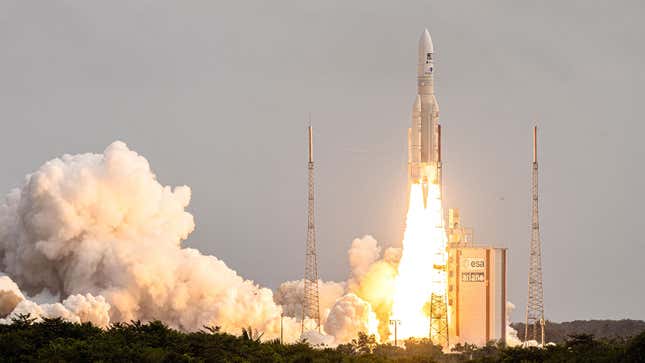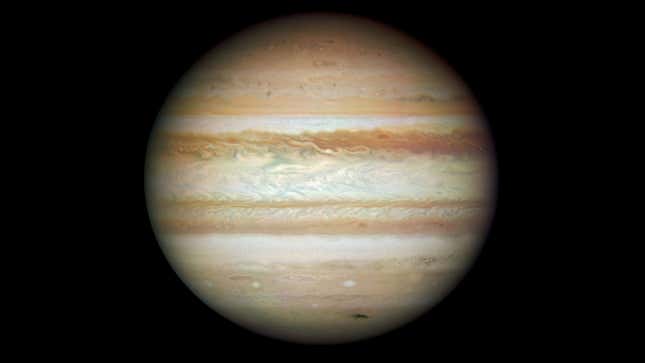
If you’re a bit of a space nerd — and I assume most of us here at Jalopnik are — then it’s a pretty exciting time right now. We’ve got the most ambitious space telescope of all time in service, NASA is experimenting with Martian aircraft and the European Space Agency is launching all manner of exciting probes to far-flung planets. Its latest mission is the Juice probe, and it successfully launched into space this morning.
In case you missed it:
- These Are Your Favorite Pieces of Automotive Trivia
- The 15 Non-Hybrid 2023 Cars That Get the Best Gas Mileage
- These are the 15 Deadliest Intersections in the United States
The Juice mission, which has the not very exciting full name of Jupiter Icy Moons Explorer, is being sent on a mission to study the largest planet in our solar system and its surrounding moons.
Now, Space.com reports that the craft has set off on its eight-year-mission after launching from French Guiana this morning. From the site:
“The European Space Agency’s (ESA) Juice spacecraft launched atop an Ariane 5 rocket from Europe’s Spaceport in Kourou, French Guiana on Friday (April 14) at 8:14 a.m. EDT (1214 GMT), after a one-day delay caused by the threat of lightning at the launch site. Spacecraft separation occurred some 28 minutes after liftoff.
“The liftoff kicked off an ambitious mission to study Jupiter and three of its biggest, most intriguing moons — Ganymede, Callisto and Europa, all of which are thought to harbor big liquid-water oceans beneath their icy shells.”

In order to reach Jupiter and its icy moons, the craft will take a long, but more fuel efficient, route to get there. First, it will slingshot around the Earth and our moon in August 2024 to use gravity to assist its flight through the solar system.
In 2025, the craft will perform a similar slingshot maneuver around Venus before swinging around Earth twice more in 2026 and 2029, if all goes to plan. These planetary encounters will give the craft sufficient momentum to power on directly to Jupiter, where it should arrive in September 2031.
Once it begins to approach Jupiter, the Juice probe’s scientific instruments will kick into action and begin studying the gas giant. Sensors onboard including an optical camera system, spectrometers, a radar sounder, a laser altimeter, a magnetometer and particle analyzers will all offer scientists back home an unrivaled view of the planet.

But as the probe begins its mission, the European Space Agency already knows how it will meet its demise. In total, it carries enough fuel onboard to complete more than 30 flybys of Jupiter and its moons.
On its final pass above the surface of the Ganymede moon, its fuel will run out. Then, the probe’s orbit around the moon will decay, until it finally crashes onto the icy surface of Ganymede. What a way to go.
